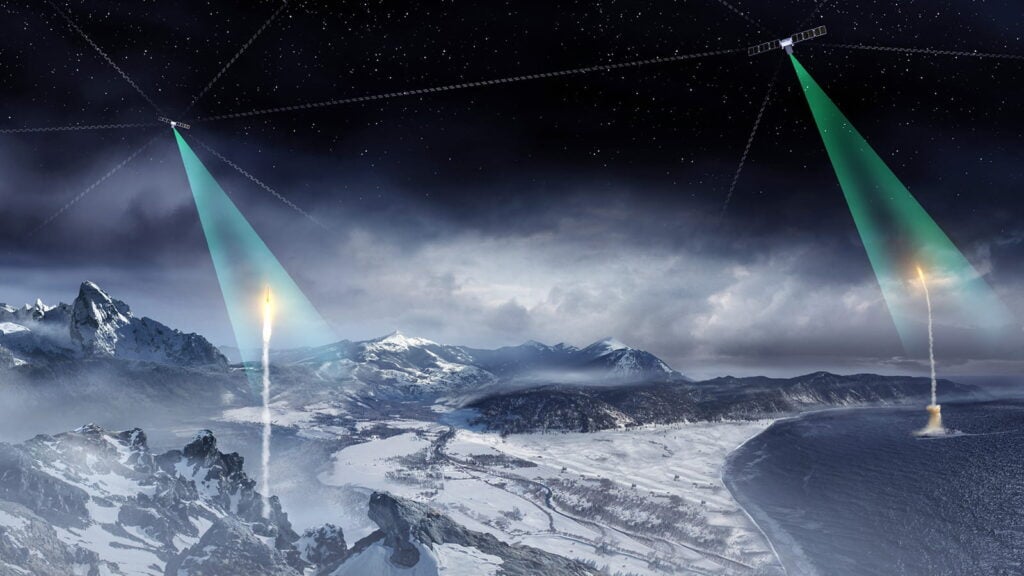
The Space Development Agency has awarded Raytheon Technologies $250M to develop a new set of missile warning/tracking satellites optimized for use by INDOPACOM in keeping tabs on Chinese hypersonic missile launches. (Raytheon)
WASHINGTON — Raytheon Technologies today announced it has been awarded a contract worth more than $250 million from the Space Development Agency (SDA) to build seven missile warning/tracking satellites — an award that stems from a congressional funding boost in the fiscal 2023 defense appropriations act, an SDA spokesperson told Breaking Defense.
The omnibus spending package, signed by President Joe Biden on Dec. 29, included $250 million specifically designed to help Indo-Pacific Command keep tabs on Chinese ballistic and hypersonic missile launches. The spending bill earmarked the new funds for “INDOPACOM missile tracking demonstration expansion.”
The new satellites will be integrated into SDA’s first operationally capable set of low Earth orbit (LEO) satellites, called “Tranche 1,” the SDA spokesperson explained.
Tranche 1 will include both missile warning/tracking birds for the Tracking Layer and data relay satellites for the Transport Layer of the agency’s planned (and newly named) Proliferated Warfighter Space Architecture.
The agency in July 2022 awarded L3Harris and Northrop Grumman contracts worth a total of $1.3 billion to develop the Tranche 1 Tracking Layer satellites, with each company to build 14 satellites to be deployed in two different orbital planes. Under SDA’s current schedule, launches of those satellites would begin in April 2025, but the Raytheon birds will fly later in 2025, the SDA spokesperson said.
“We are planning for these satellites to launch around the end of calendar year 2025, after the other Tranche 1 space vehicles previously on contract are launched. … This stands to reason because the other performers got an earlier start to their Tranche 1 work (T1Tracking original contacts were announced in July 2022),” the spokesperson said.
The Raytheon-developed satellites “will become the fifth plane of satellites providing missile warning and tracking,” according to a company press release. “The seven-vehicle satellite constellation will feature Raytheon’s Wide Field of View overhead persistent infrared sensor, Blue Canyon Technologies’ Saturn-class microsatellite bus, and SEAKR Engineering’s electronics payload.”
Blue Canyon and SEAKR are both owned by Raytheon.












